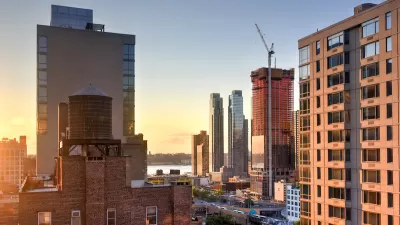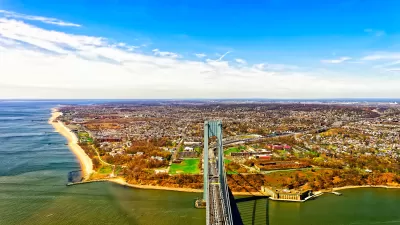With average rents $2,800 more than the rest of the country, and the average home costing $1.46 million, it's increasingly difficult for the non-wealthy to live in Manhattan. Amy O'Leary goes in search of the borough's vanishing middle class.
"In a city like New York, where everything is superlative, who exactly is middle class? What kind of salary are we talking about? Where does a middle-class person live? And could the relentless rise in real estate prices push the middle class to extinction?"
These are the questions that drive O'Leary in her search for what defines "middle class" among Manhattan's 1.6 million residents, in what is "probably the only place in the United States where a $5.5 million condo with a teak closet and mother-of-pearl wall tile shares a block with a public housing project."
"The average Manhattan apartment, at $3,973 a month, costs almost $2,800 more than the average rental nationwide. The average sale price of a home in Manhattan last year was $1.46 million, according to a recent Douglas Elliman report, while the average sale price for a new home in the United States was just under $230,000. The middle class makes up a smaller proportion of the population in New York than elsewhere in the nation."
"And yet the middle class stubbornly hangs on," says O'Leary, "trading economic pain for the emotional gain of hot restaurants, the and the feeling of being in the center of everything. The price tag for life’s basic necessities — everything from milk to haircuts to to electricity, and especially housing — is more than twice the national average."
O'Leary considers the definition of “middle class” through five different lenses: Income, Profession, Household Size, Length of Residence, and Values.
FULL STORY: What Is Middle Class in Manhattan?

Maui's Vacation Rental Debate Turns Ugly
Verbal attacks, misinformation campaigns and fistfights plague a high-stakes debate to convert thousands of vacation rentals into long-term housing.

Planetizen Federal Action Tracker
A weekly monitor of how Trump’s orders and actions are impacting planners and planning in America.

In Urban Planning, AI Prompting Could be the New Design Thinking
Creativity has long been key to great urban design. What if we see AI as our new creative partner?

King County Supportive Housing Program Offers Hope for Unhoused Residents
The county is taking a ‘Housing First’ approach that prioritizes getting people into housing, then offering wraparound supportive services.

Researchers Use AI to Get Clearer Picture of US Housing
Analysts are using artificial intelligence to supercharge their research by allowing them to comb through data faster. Though these AI tools can be error prone, they save time and housing researchers are optimistic about the future.

Making Shared Micromobility More Inclusive
Cities and shared mobility system operators can do more to include people with disabilities in planning and operations, per a new report.
Urban Design for Planners 1: Software Tools
This six-course series explores essential urban design concepts using open source software and equips planners with the tools they need to participate fully in the urban design process.
Planning for Universal Design
Learn the tools for implementing Universal Design in planning regulations.
planning NEXT
Appalachian Highlands Housing Partners
Mpact (founded as Rail~Volution)
City of Camden Redevelopment Agency
City of Astoria
City of Portland
City of Laramie





























